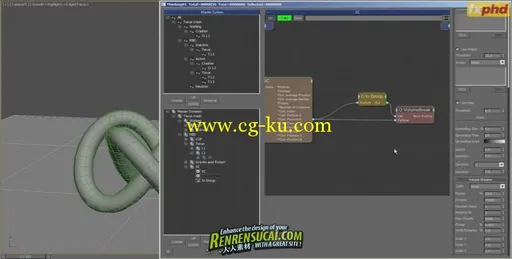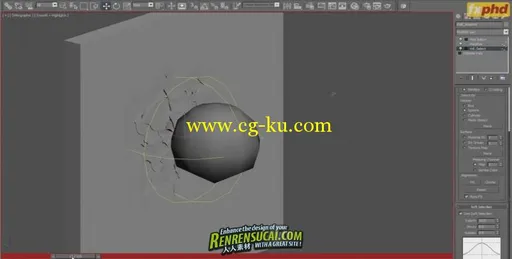本教程是由Fxphd机构出品的3DSMAX视觉特效技术高级教程。
当今大型电影绝伦的特效,不禁让你要惊叹其合成的逼真与强大!!fxphd 教育机构出品的教程,相信大家都知道,都为业界的高端教程。
Autodesk 3ds Max Design 2012提供了强大的全新渲染工具集,加速的迭代工作流程,以及增强的互操作性,这些都可以从整体上极大的提升你的制作效率。
3ds Max Design 2012的新功能包括:
Nitrous加速图形核心:在性能和视窗的可视化质量上进行了显著的提升。
Autodesk Alias产品互操作性:借助面向工业设计的Autodesk Alias Design软件,你可以享受顺畅的互操作性,并具有将.WIRE文件导入到3ds Max Design中的能力。
物质程序纹理(Substance Procedural Textures):将80个程序纹理物理化,显示出非常真实的效果。
Fxphd MAX202 Visual Effects Techniques with 3DSMax
The course goes into the techniques used in doing visual effects work with 3DS Max and its plugins – Thinking Particles, Rayfire, and FumeFX. Coming from a feature film production background, the focus is on quality and efficiency. It is a holistic view of the process – from planning, through fragmentation, rigid bodies, particles, fire/smoke, down to management and assembly.
Hristo Velev is an effects artist at Pixomondo, delivering FX for projects like ’2012′ and ‘Sucker Punch’.
Class 1: Modeling for dynamics – We’ll go through the needs and pecularities of modeling for effects – which the FX artist needs to either do or supervise, to get the necessary assets.
Class 2: Previz and layout – The power and importance of composing effects scenes in the previs and layout stage is one of the big lessons in FX. We’ll get into how rough sketches, simple animation and particle effects are used to plan a shot, laying its foundations and setting it on the right course.
Class 3: Fragmentation – We’ll go over the techniques used to fragment and prepare the assets for dynamics. The treatment of different types of materials like wood, concrete, glass, etc. Fitting the level of detail into the plan of the shot.
Class 4: Rigid body dynamics and procedural fragmentation – Goes into setting up a solid and extensible structure for ridid body dynamics (RBD) in Thinking Particles. Then we take a look at procedural activation and fragmentation, how and when to use them.
Class 5: Structures – Going further into what can be done with rigid bodies, we’ll look at different ways to create and destroy interconnected structures of rigid bodies.
Class 6: Additional animation – Adding art-directed secondary animation to enrich the RBD simulations, and adding effects that are otherwise less practical to achieve.
Class 7: Secondaries – Adding layers of secondary dynamics like chunks, debris, splinters, shrapnel and funny accidentals.
Class 8: Interactions – Making the existing RBD simulation interact with the environment, producing some more elements like sparks, dust, mounds of earth and secondary destruction.
Class 9: Fluids – Fire and smoke are essential in almost every shot. We’ll look at working both ways – from the solids to the fluids, and from the fluid to the solids, setting up and controlling FumeFX simulations.
Class 10: Management – Looks at the key points of managing the FX process, start to finish. A way to set up a good base for any FX element in the start, and assembling all the pieces of the puzzle together for rendering.
115



发布日期: 2011-10-18